Conference: Calendars in Antiquity and the Middle Ages
By uclhcmm, on 11 September 2017
By Nadia Vidro and Ilaria Bultrighini
On 3–5 July 2017 the ERC Calendars project team, together with the UCL Institute of Jewish Studies, ran our final conference Calendars in Antiquity and the Middle Ages. This conference presented the outcomes of the team’s research on the history and evolution of calendars in late antique and medieval societies, together with contributions from international collaborators in the field.
Jump to day 1, Antiquity and the Early Middle Ages / Jump to day 2, Later Middle Ages
The conference opened in the evening of 3 July with a keynote lecture How calendars become standardized and fixed by Sacha Stern, the project’s PI. Stern introduced the ERC Advanced Grant Project Calendars in Antiquity and the Middle Ages: Standardization and Fixation and described its five research areas. He then set out to explain how calendars in Europe and the Near East transformed from flexible, non-standard and predominantly lunar calendars of the ancient world to fixed and predominantly solar calendars of the early Middle Ages. Stern connected the standardization of calendars with the formation of empires with their imperial culture and unified administration, and with religious changes from pagan pluralism to orthodox monotheism. Stern presented three case studies to demonstrate the processes of calendar standardization. The seven–day week stems from the two distinct traditions of the planetary and the biblical week, which gradually merged into one hebdomadal cycle, starting in the late 1st century CE and culminating in the 4th century CE. Stern recognised two main processes in place towards the standardization of the seven-day week: on the one hand, the imperial hybridization in the Roman Empire, and on the other, the diffusion of Easter tables and the impact of Christianisation. In the 921/2 the calendar dispute between the Babylonian and the Palestinian Jewish communities the main vehicle of ensuring that everybody used the same calendar was to write a book on the correct calendar and to decree that it be read regularly. The data line was conceived in the Middle Ages mainly by Jewish thinkers who, owing to their ideology of standardized time, strived to count the day of the week in the same way around the globe.
DAY 1: CALENDARS IN ANTIQUITY AND THE EARLY MIDDLE AGES
The first day of the conference was dedicated to calendars in Antiquity and the early Middle Ages. The periods, contexts, and geographical areas covered spanned from early Babylonia to Archaic and Classical Cyprus, late Hellenistic Judea, the Greek East under Rome, pre-Islamic Arabia, and the early Medieval Latin West. Speakers dealt with a range of topics, including calendrical material in the Qumran scrolls and the relationship between civic and ritual calendars in Greek antiquity; yet a few common themes emerged as well, in particular, the modes and practices of intercalation in a variety of calendrical systems, and the approaches and reactions of cultures using luni-solar calendars to the model of the Julian 365-day year.
John Steele (Brown University) examined the role played by intercalation practices in early Assyrian and Babylonian calendars. He pointed out that very few sources dating prior to the eighth century BCE discuss intercalation and, accordingly, he based his analysis primarily on a series of eighth/seventh century BCE cuneiform texts, assuming that these preserve earlier astronomical and calendrical material. The information on intercalation rules and on the length of the luni-solar year appearing in such texts points to the use of multiple intercalation schemes, not all compatible with one another, which fell under two basic types: the first was based on the dates of visibility of a star, and the second on the date of ‘balancing’ of the Moon and the Pleiades. Interestingly enough, there is in fact little evidence for any of the schemes being used in practice.
Helen Jacobus (UCL) focused on the Aramaic calendrical scroll from Qumran 4Q209. Her reconstruction of the scroll fragments led her to interpret the text as representing an ideal year in the 19-year cycle, known as the Metonic Cycle. Jacobus’ assumption is that 4Q209 may show that Jewish groups used an ideal equinoctial and solstitial festival calendar in a devised, hybrid 19-year cycle. She further showed that the equinoctial festivals are mirrored in the Babylonian festival calendar in the spring and autumn, but there are no equivalent solstice festivals. Jacobus’ conclusion is that the system of intercalations in the Jewish calendar probably differed from those in the Babylonian calendar which it adopted.
Robert Hannah (University of Waikato) looked at the relationship between seasonal cult activity at temples on Cyprus and the calendars of the island, with a focus on the pre-Hellenistic period. This study is part of Hannah’s archaeoastronomical research on ancient Greek sanctuary sites, which analyses the connection of architectural features and orientation of temples with festival/cult activity being performed at these sanctuaries. He examined a series of month-lists referring to the various calendars in use on Cyprus from the Archaic to the Roman period, the earliest of which relates to the ancient city of Akanthos and survives inscribed on the so-called Bulwer Tablet, dating to ca. 500 BCE. This analysis led Hannah to determine that the month-names of the various calendars used on Cyprus throughout antiquity were consistently related to divinities and associated to the specific seasons on which major festivals of those gods and goddesses occurred.
Jonathan Ben-Dov (University of Haifa) discussed how the 365-day year was perceived in early rabbinic sources. He argued that, due to ideological and political concerns, these texts consistently supported the use of a luni-solar calendar. Ideological motivations placed the role of humans above divine intervention in the control over the regulation of time, while from a political point of view the rabbinic promotion of a lunar calendar as opposed to the use of the Julian (solar) calendar acted as a statement of dissent against the Roman authority. Nevertheless, a small number of late tannaitic sources show a commitment to the 365-day year and to a solar calendar. Ben-Dov concluded his paper with a close examination of these latter statements and with a discussion of their relation with other rabbinic sources on the calendar.
Ilaria Bultrighini (UCL) presented the results of her research on a set of early medieval Greek manuscripts known as Hemerologia. These manuscripts consist of comparative, full-length calendar tables in which the days of the Julian calendar are listed in the first column, and the equivalent days in more than a dozen other calendars are listed in the other columns. The latter are identified as calendars of the provinces and cities of the eastern half of the Roman Empire. The Julian calendar, along which they are laid out, serves as their common reference point. Bultrighini assumed that the Hemerologia were produced in the imperial or late antique period, and emphasised their informative role on the diversity of calendars of the provinces and cities of the Roman East, as well as, at the same time, on their assimilation in the Roman period to a fixed and stable common denominator, the 365-day year of the Julian calendar.
Yusuf Gürsey’s (Polytechnic Institute Istanbul) talk, The Arabian Calendar Before Islam, offered a scrutiny of past and current studies on the pre-Islamic Arabian calendar and addressed a range of issues related to the history of both the latter and the present Islamic calendar. Gürsey paid particular attention to the question of whether intercalation was in use in the Arabian calendar before Islam and after discussing the main scholarly viewpoints on the matter (Perceval, Amir Ali, Hamidullah, Shamsi, de Blois), he argued in favour of the practice of intercalation. Gürsey also maintained that the pre-Islamic Arabian year began in autumn and that the algorithm of intercalation was imperfect causing drift.
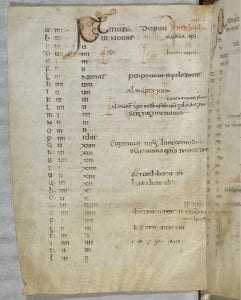 Immo Warntjes (Trinity College Dublin) dealt with the emergence of the early medieval calendar tradition in Western Europe. He pointed out that there is no extant calendar between the last preserved calendar of antiquity, i.e. the laterculus of Polemius Silvius, produced in the mid-fifth century CE, and Willibrord’s calendar of the 680’s, which is the first known calendar of the Middle Ages. It is an established view among medievalists that the Roman archetype of Polemius Silvius’ calendar was recovered in the seventh century in Northumbria and from there it was passed on to the Carolingian empire. Subsequently, in 789, Charlemagne would have designed a ‘super calendar’ that would have acted as a model for the next five hundred years. Warntjes challenged this traditional view and proposed alternative origins of early medieval calendars by focusing on two aspects: the assumption that alternative routes of transmission of calendrical ideas are to be taken into account, and the idea that the early medieval calendar was not necessarily based on a Roman model.
Immo Warntjes (Trinity College Dublin) dealt with the emergence of the early medieval calendar tradition in Western Europe. He pointed out that there is no extant calendar between the last preserved calendar of antiquity, i.e. the laterculus of Polemius Silvius, produced in the mid-fifth century CE, and Willibrord’s calendar of the 680’s, which is the first known calendar of the Middle Ages. It is an established view among medievalists that the Roman archetype of Polemius Silvius’ calendar was recovered in the seventh century in Northumbria and from there it was passed on to the Carolingian empire. Subsequently, in 789, Charlemagne would have designed a ‘super calendar’ that would have acted as a model for the next five hundred years. Warntjes challenged this traditional view and proposed alternative origins of early medieval calendars by focusing on two aspects: the assumption that alternative routes of transmission of calendrical ideas are to be taken into account, and the idea that the early medieval calendar was not necessarily based on a Roman model.
DAY 2: CALENDARS IN THE LATER MIDDLE AGES
The second day of the conference focused on calendars and calendar literature of the later Middle Ages. Speakers discussed the transmission of texts on calendar and chronology and the need to combine literary and documentary sources for the study of calendars; medieval takes on the role of mathematical and astronomical knowledge in understanding the principles of calendar as well as popular calendation schemes resulting from a lack of such expertise; calendars as organizing principles of different types of time, and motives and necessary conditions for a calendar reform.
François de Blois (UCL) discussed the textual history of al-Biruni’s Chronology of the Ancient Nations, an Arabic classic book on calendar written in the year 1000 CE. Using a range of early manuscripts from different manuscript families, de Blois demonstrated that the Chronology continued to be updated after its original publication. A case in point are month names in various calendars that are not found in the original text, among them months that have now been identified by de Blois as being in the language of the Kita, a dynasty that ruled northern China from 916 to 1128. Al-Biruni reports meeting Kitan ambassadors, who visited the Ghaznavid court in 1020s, and asking them some questions. He may have enquired about the nature of their calendar and noted Kitan month names in the margins of a copy of the Chronology, from where they made their way into the text of one family of manuscripts.
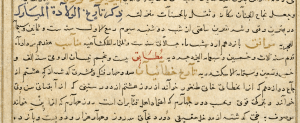
Arabic text containing a Jalali date from Horoscope of Iskandar Sultan.
Source: Wellcome Library in London
Johannes Thomann (University of Zurich) emphasised the importance of studying literary texts on calendars alongside evidence of their use in documentary sources. Thomann focused on a modernised Persian calendar known as the Jalali calendar, which was introduced in the late 11th century during the reign of the Seljuk sultan Jalal al-Dawla Malik-Shah. According to medieval literary sources, the new Jalali calendar fully replaced the Old Persian calendar used before. However, the Jalali dates are not attested in any official documents, inscriptions or on coins, and appear solely in astronomical and astrological documents, making the impression that this was not an official calendar reform but an innovation of the astronomers who dedicated their new calendar to the sultan. Using Jacques Le Goff’s concepts of civil and ritual time, Thomann presented a functional model to explain the cohabitation of calendars. To him the Old Persian, Hijri and Jalali calendars were used in the Seljuk period for different purposes: the Old Persian calendar for administration, the Hijri calendar for regulating religious time, and the Jalali calendar for individual horoscopes and prognostication.
Ilana Wartenberg’s (UCL) talk highlighted the role of mathematical knowledge for understanding the principles of the Jewish calendar, together with the role of calendar literature in transmitting mathematical texts. Sefer Yesod Olam, a seminal 14th-century work on the Jewish calendar composed in Toledo by Isaac Israeli b. Joseph, opens with an extensive book on advanced arithmetic, geometry and trigonometry, which Israeli judged instrumental for understanding astronomy and ultimately the workings of the Jewish calendar. Wartenberg’s study of mathematical materials in Yesod Olam reveals that it contains a partial Hebrew transmission of Euclid’s Elements. This Hebrew version of the Elements is different from 13th–century Provençal renditions of Euclid by Moses ibn Tibbon and Jacob ben Machir and may stem from an Arabic source.
Nadia Vidro (UCL) turned our attention to popular calendar schemes used by people with little calendar knowledge. In medieval Jewish manuscripts, 247-year calendar tables are frequently found that are said to repeat themselves forever. Such tables are incompatible with the standard Jewish calendar and can occasionally lead to celebrating major religious holidays at wrong times. On the basis of a large corpus of manuscripts, Vidro demonstrated that the convenient if imprecise calendar cycle was known and used in all corners of the Jewish world, connecting its popularity with the fact that in the Jewish community nobody is officially responsible for fixing the calendar. Noting the lack of documents dated in accordance with the popular cycle, Vidro hypothesized that information about calendar mistakes may have been disseminated between communities on an ad hoc basis.

Yesod ʻolam, Israeli, Isaac ben Joseph, 1484, MS. Huntington 299, Photo: Bodleian Libraries, University of Oxford 2017
Israel Sandman (UCL) concentrated on medieval Jewish astronomers’ interpretation of ancient Rabbinic traditions. An obscure and apparently contradictory passage in the Babylonian Talmud presents criteria for checking witnesses who claim to have sighted the new moon, at the time when the Jewish calendar was determined by observation. This passage is analysed by two Jewish Iberian scholars Abraham Bar Hayya (12th century) and Isaac Israeli (14th century). In a painstaking analysis of the Talmudic passage and its Iberian interpretations, Sandman demonstrated how Abraham Bar Hayya and Isaac Israeli used astronomical calculations, data from existing astronomical tables and astronomical observations in their quest to show that the passage is, in fact, coherent, astronomically sound and accurately fulfills it function of confuting witnesses.
Charles Burnett (The Warburg Institute) showed how a calendar text can be transformed as it is transmitted in different manuscripts and between cultures. The Calendar of Cordoba was composed in Arabic in the second half of the tenth century, and includes information on astronomy, meteorology and agriculture, with important details for the area of Cordoba. At least four separate Latin versions of this calendar have now been identified, which differ in their contents and format both from the Arabic original and among themselves. All Latin versions of this calendar include additional liturgical and medical information not found in the original Arabic calendar and are adapted in manuscripts to different localities by providing information on local saints.
Philipp Nothaft (University of Oxford) talked about the difficulties of carrying out a calendar reform. He set out to investigate why the Gregorian reform of 1582 did not take place earlier, although the need for it was widely discussed and the necessary knowledge was in place already in the Middle Ages. Nothaft presented evidence that the reform was largely inhibited by factors external to calendar reckoning: while some modifications were feared to cause economic, administrative and political problems, others threatened to disrupt the liturgical year. The logistics of disseminating a new calendar across Europe before the age of printing presented a serious problem. Various solutions were proposed, including issuing a mnemonic decree with key alterations that owners of existing calendars had to perform in order to change old tables into new ones, as well as making announcements in churches. But it was not before the political conditions changed and printing became widespread in the 16th century that the reform could be carried out in practice.
Elisheva Carlebach (Columbia University) stressed that calendars not only organise time but situate current time within history. In the Jewish tradition the historical time is seen as linear and finite, with a clearly marked beginning and a discernible end. By adopting the Anno Mundi Era, Jewish calendar reckoning became firmly anchored at the beginning of times. Looking for echoes of the eschatological consequences of the linear symmetry of time, Carlebach studied Sifre Evronot, early-modern Jewish calendar compendia, to see whether they made references to the end of time. It appears that despite the eschatological fever and messianism characteristic of the early-modern Jewish culture, Sifre Evronot hardly address this topic in their text, and only rarely in illustrations. Prognostication is equally absent, indicating that Sifre Evronot were interested mainly in the past and present but not in the future.
2 Responses to “Conference: Calendars in Antiquity and the Middle Ages”
- 1
 Close
Close


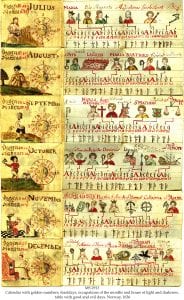

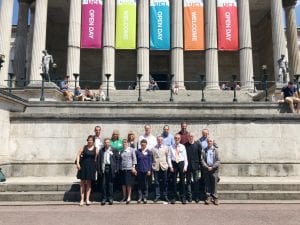
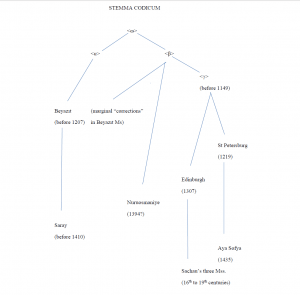
Is there any current research going on pertaining to time reckoning and calendars at UCL. If so , could you please send me contact information.